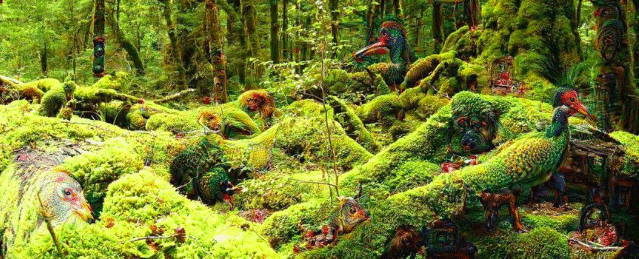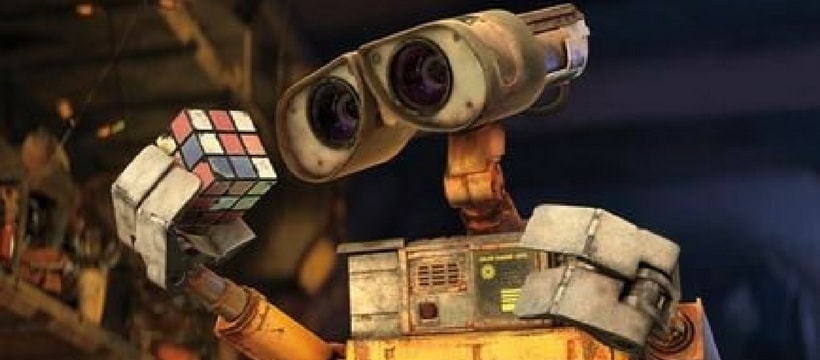In a previous article, we discussed the limits of artificial intelligence in comparison with the human brain. If initiative seemed decisive in this comparison, would there be any other human specificities? Can artificial intelligence be creative, for example?
While the portrait of Edmond Belamy, a painting created by artificial intelligence, sold for over 435,000 dollars, while some composers use AI to write, and while Gary Kasparov, former chess champion, was beaten by this technology, the combination of artificial intelligence and creativity is not yet unanimously accepted. Indeed, there is much controversy surrounding the immiscion of artificial intelligence in art. There are two opposing mentalities: those who reject the contribution of this technology to the field, and those who glorify it.
But the debate goes deeper than that:
Have robots created or copied? Have they been creative? What is creativity above all?
In his 1950 article “Computing Machinery and Intelligence”, Alan Turing confronted this problem of definition. First of all, we need to look at the different nuances of creativity.
Creativity is a relative concept...
There’s a kind of creativity that could be described as innovative, involving profound transformation and unprecedented change. This can range from the invention of an entirely new field – as was the case with cinema or aviation – to the revolution of an existing field, as with Picasso and his cubist movement.
There is also the more common exploratory creativity, which simply consists in creating without revolutionizing the genre – like Mozart, who didn’t invent classical music, but created timeless masterpieces with a particular identity.
According to Stéphane Mallard, digital evangelist;
Everything we can do with our brains can be done by AI.
To back up his assertion, we can point to a number of algorithms that are performing feats in various artistic fields, from painting to music, from recipes to the screenplay of a short film called “Sunsprising”, available on YouTube.
Recent technological revolutions, such as GAN (Generative Adversarial Network), a class of unsupervised learning algorithms, Deep Learning and Reinforcement Learning, have enabled the creation of truly breathtakingly realistic works in both painting and music, to the point where enthusiasts are unable to distinguish between the work of the machine and that of man.
Painting achievements
The algorithm is fed several works and its training consists of creating a painting based on the characteristics of its data with the aim of fooling another network that determines whether or not the painting is machine-made.
If the second network is wrong, i.e. doesn’t know whether or not the work is the product of an algorithm, the work is considered original. After training, the machine produces a painting from a photo in the desired style, as shown below. You could say that this is simple recopying, not invention. This, in fact, is what Emilien Dereclenne,cresearcher in philosophy of cognitive science at the COSTECH Laboratory and AI consultant says:
AI learns from its human predecessors, but that’s not enough to talk about creativity. What about emotionality, sensitivity, our experience?
However, many people have trouble telling the difference between right and wrong. And in a test conducted, people had a preference for machine achievements over human ones. There’s no real emotional intelligence, but it was able to spot the emotions exuded through the painting. That’s the real feat! What’s more,building on a particular style and adapting it to suit the situation is not the pattern of a simple recopy.
There’s no denying Rembrandt’s genius, despite the fact that he drew inspiration from Lastman, Elsheimer and Rubens. Indeed, some projects aim to bring painters to life rather than draw inspiration from them, such as Next Rembrandt, a algorithm produced in association with Microsoft and the bank ING, which deconstructed the eponymous author’s style, even going so far as to study hair distribution. A new approach called CAN, Creative Adversarial Network, goes even further by generating artistic images outside the mainstream, and here again the machine has been preferred to man. Here, creation goes beyond known and documented paterns.
Would this be the creation of a new current?



There’s also Google’s famous Deep Dream algorithm, which aims to recognize animals in shapes such as clouds or tree trunks, with a rather psychedelic rendering. Clearly, if it identifies a shape that resembles a bird, it will modify the basic image to insert a bird. There’s a very particular notion of creativity here.
A knighthood in music
Artificial intelligence doesn’t just shine in painting. It’s very present in music, and more recognized than in painting. It ranges from classical to contemporary to rock. Start-ups Flow Machine and Muzeek propose to automatically generate songs based on a person’s arrangements, such as piano or banjo notes. Sony’s FlowMachines artificial intelligence is capable of composing music inspired by a particular musical trend. One of the best-known is “Daddy’s car”, influenced by the Beatles’ rock style. Shimon Robot, created by roboticist Guy Hoffman, composes melodies inspired both by its partners and its own influences, or database to be more precise, which are jazz and classical.
All these programs work in the same way: they are “nourished” by several types of music, potentially from various currents, which they analyze to discover patterns and motifs. Once again, the notion of identity, so specific to creation and its creator, may be called into question, but we can’t reproach the machine for doing what man does, i.e. drawing inspiration.
David Cope, professor of computer science and music at the University of California, created Emily Howell, which was itself inspired by the classically-influenced artificial intelligence EMI. This professor went one step further, realizing that his creations are more personal and contemporary.

The AI is nevertheless a great player
We could go on to talk about many other fields, such as IBM’s Watson artificial intelligence, which creates recipes for cooking. Or “1 the road”, the first book written by an artificial intelligence to be poorly received by the critics, or Scheherazade in a similar style.
If there’s one field in which artificial intelligence is already shining undisputedly, it’s strategy games.
No wonder: these are basic games with rules and a simple objective, which is to win. It’s a narrow enough framework for our current capabilities to create machines that don’t compete with man, but dominate him! Let’s take a look at AlphaGo and AlphaZero, two artificial intelligences from Google DeepMind. By the time AlphaGo rocked the world of go by winning against a human, there was already DeepBlue, an algorithm that defeated the world chess champion of the time.
So why did we first succeed in outperforming humans at chess and then at go? The answer is simple: Deep Learning. DeepBlue calculates all possible combinations for each turn over several moves. There’s no intelligence involved, just raw computing power. However, there are an average of 250 to 300 moves per round in the game of Go – compared with 20 in chess – and no way of calculating a score – unlike in chess, where each piece has a weight. AlphaGo alleviated the problem by studying over 160,000 games, the equivalent of 30 million moves.
Unfortunately for skeptics, this artificial intelligence can’t be said to be simply copying, as during its performance against the champion Lee Sedol, it made a move that unsettled both the champion and one of the commentators. A former champion himself, it took him some time to figure out where to place the pawn on the model that allowed the audience to see how the game was progressing.
It may seem insignificant, but this revolutionary move was decisive in his victory and is now studied by professionals. There’s a notion of pure creation here, as a move was invented on an ancestral game.
Then came AlphaZero, which impressed even more. AlphaZero learns to play face-to-face, a process known as Reinforcement Learning. It trained for 140 million games and beat AlphaGo in every 100 games played. The intelligence that learned to play on its own managed to beat the one that relied on human experience.
Next, it trained over 44 million times at chess and beat Stockfish, the best chess program at the time, 155 to 4 with 899 draws. The result is all the more impressive given that Stockfish calculates 60 million moves per second, whereas AlphaZero calculates 1,000 times less. So how can an algorithm that anticipates fewer moves dominate? It all comes down to the way you play.
AlphaZero favors mobility and positioning at the expense of the points each piece is worth, which is not the case with chess champions. This time, creativity is far more important than simply making a new move!
Artificial intelligence can perform wonders in a few limited areas. However, this field of activity is constantly evolving, and is beginning to extend its horizons into areas more suited to human beings, where a certain sensitivity and experience are required. Artificial intelligence may still be controversial, but its progress is impressive.
Would you like to master the Deep Learning and Reinforcement Learning techniques described in this article? Don’t hesitate to contact us and find out more about our training courses!










